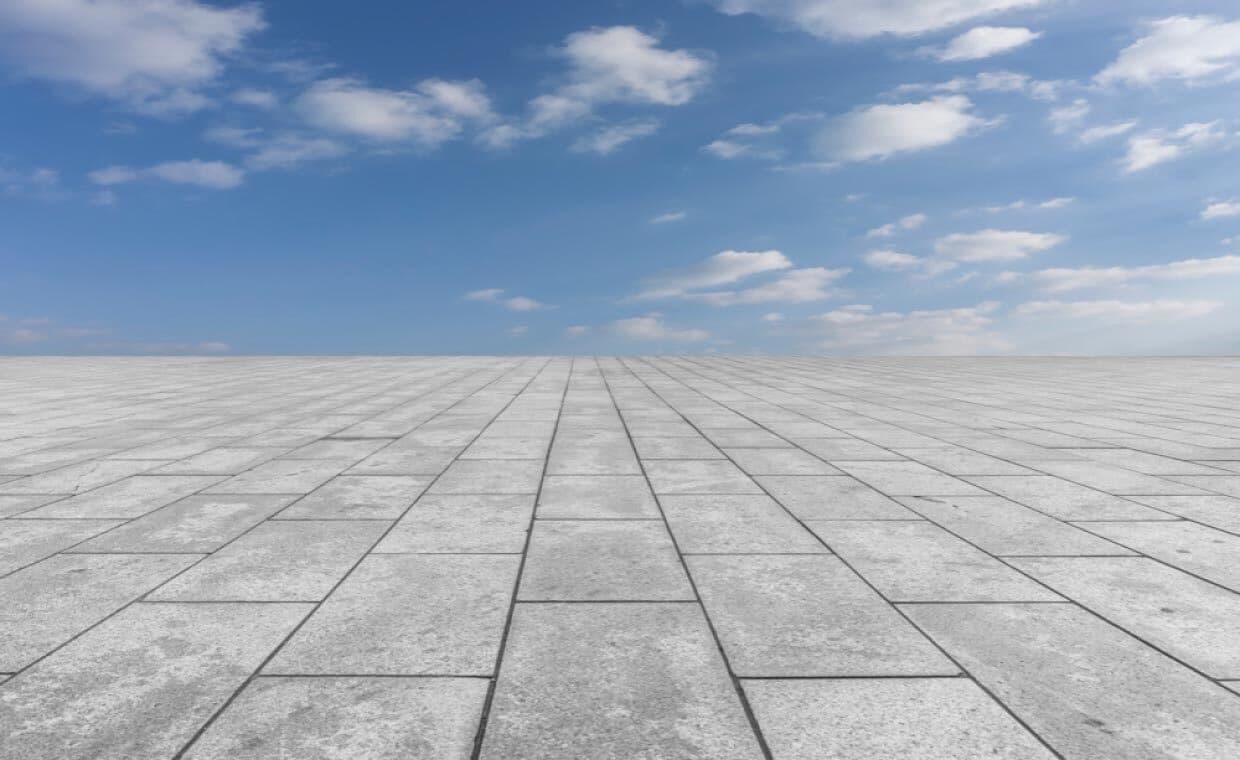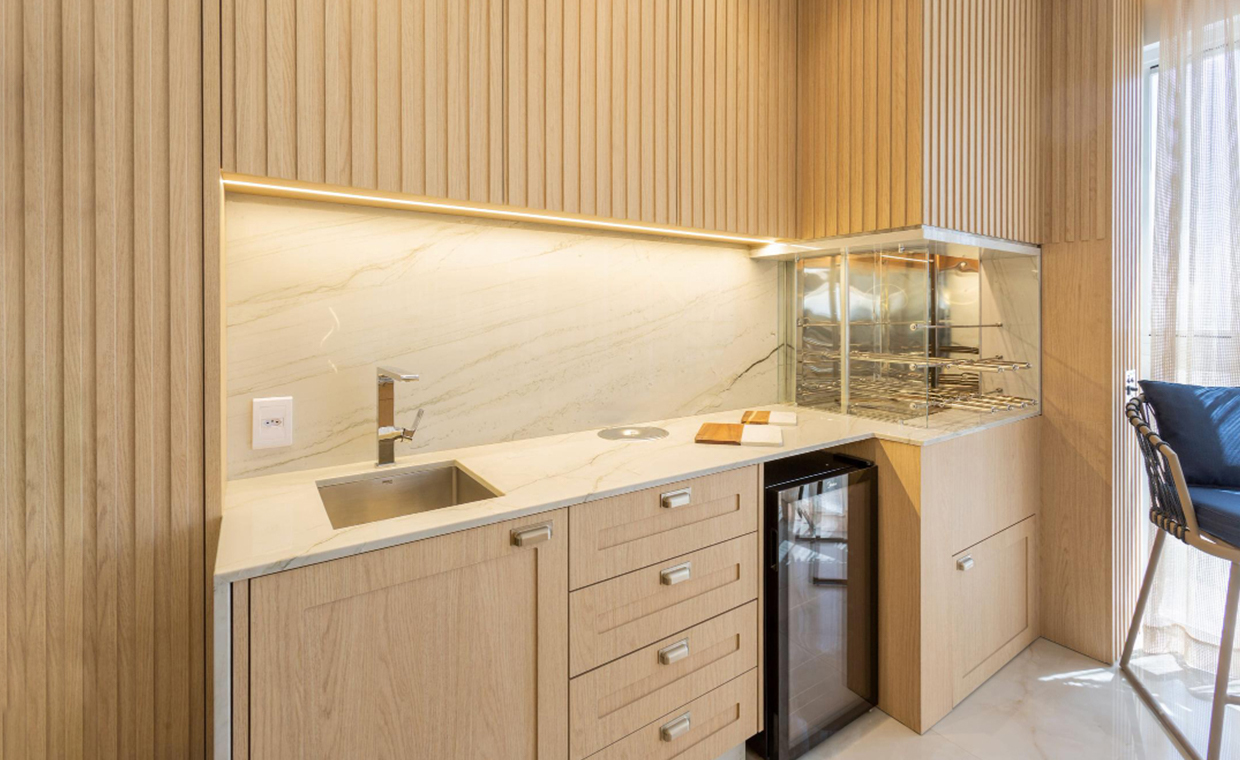
Table of Contents
Introduction
Combining its ice and heat resistance makes concrete a popular construction material. However, whether you have a concrete driveway, sidewalk, or floor, you may have noticed an odd problem developing over time: a peculiar stain or discolouration that ruins the beauty of the concrete surface.
Despite its reputation for strength, beauty, and durability, concrete discolouration is a common problem. However, the fact also remains that it is simple to fix discoloured concrete. Fortunately, there are effective, concrete restoration methods available to restore its original appearance. Let’s look in detail at how discolouration of concrete happens and how to fix it.
What is Concrete Discolouration?

A simple way to describe discolouration in concrete is as a change from its original colour. This can result from the presence of calcium chloride in the concrete, cement, or additives. Other potential causes include improper curing, unfavourable weather conditions, or poor workmanship. Some of these causes of discolouration can be fixed. A contractor can also take steps to minimise the appearance of those ugly stains, streaks, and blotches. Once the concrete has fully set, the appropriate treatment for the discolouration can be chosen based on its underlying cause.
What Causes Concrete Discolouration?
The following are some common causes of concrete discolouration:
i) Inconsistent Materials:

Consistency in mixed proportions is especially important if you want to avoid the problem of colour variation in concrete. Due to batch-to-batch variation in the concrete mix delivered at the site, achieving a uniformly coloured concrete surface can be difficult. These variations in concrete mix result from inconsistencies in the ingredients used to make the concrete.
ii) Adding water on the Job Site:

Water is added to the concrete mix at the construction site to improve workability. However, when the water is not mixed well, the concrete looks blotchy.
iii) Change in Colour of Cement:

Variations can occur in the cement and consequently in the concrete made with that cement if the raw materials used in cement production are burned or ground differently than usual. Shades of grey, brown, and even black can result from adjustments in the type of cement used in the mix. Slight colour variations in the concrete are common when cements of different manufacturers are used in the same project.
iv) Adding Calcium Chloride:

When calcium chloride is used to speed up the setting time of the concrete, it can cause the concrete to appear darker, especially when it is added in amounts around 2% by weight of cement. When you don’t mix the concrete thoroughly after adding calcium chloride, it results in uneven or blotchy colouration.
v) Replacements for Cement:

Colour changes in the finished concrete can occur depending on the type and amount of supplementary cementitious materials used, such as fly ash, slag cement, or silica fume. Fly ash may either lighten or darken the surface, depending on its class, while slag cement typically results in a brighter, whiter appearance. Silica fume tends to darken concrete but increase uniformity if mixed and finished properly.
vi) Poor Quality of Work:

Contractors should consider the weather forecast before starting a concrete pour. It is not recommended to pour concrete onto a dry subgrade. Dry finishing concrete with bleed water on the surface alters the appearance of the concrete and makes it more difficult to distinguish between different sections. Additionally, placing concrete in hot weather increases the rate of water evaporation. Using evaporative retarders, windbreaks, and other situational relevant measures may be necessary.
vii) Placement of Objects on Concrete during the Initial Curing:

Consistent curing of the concrete is crucial for achieving uniform-coloured concrete floors. Curing concrete with plastic sheets can discolour the concrete surface. Crease or air holes in plastic coverings or drying sheets can result in a “leopard spotting” effect.
How to Prevent Colour Variation Problems in Concrete?
- Avoid using calcium chloride in the concrete mix.
- Use consistent concrete ingredients across all batches.
- Pour, finish and cure the concrete at the appropriate time to minimize the risk of discolouration.
- Avoid altering the standard concrete mixing and placing procedures, as changes can cause noticeable and permanent discolouration.
Concrete Discolouration Treatment Guide
Below are some recommended methods for treating discoloured concrete.
i) Cleansing
Flush the hardened surface with hot water and scrub it with a fine brush to eliminate light, ugly concrete stains and even out moisture and mineral buildup in the concrete. Depending on the severity of the discolouration, you may need to repeat this process. Once the concrete is dry and the stains have faded, apply a new, thin coat of concrete sealer to protect the surface.
ii) Acid Wash on Discoloured Concrete
For severe discolouration, a mild acid solution, like 1% to 3% muriatic acid, works as the best concrete stain remover. Using stronger concentrations of muriatic acid may leave marks and weaken the concrete, so it is important to use the right amount.
Flood the surface with water and then allow it to dry slightly and then apply the acid solution, to control acid absorption. If the acid solution remains on the surface for too long, it may penetrate deep into the concrete. Therefore, it is best to treat concrete surfaces where you can easily manage acid absorption based on the drying time after flooding. After applying, you have 15 minutes to wash off the acid solution with clean water. This must fix the discoloured concrete.
iii) Colour-Tinted Concrete Sealer for Discolouration
If washing the surface doesn’t work and you want to avoid using acid solutions, then opt for this alternative method for treating discoloured concrete. Acid solutions and acrylic sealers, however, can alter the appearance of the material if they penetrate the concrete.
Acid treatments can create a marbled effect, while acrylic sealers darken the surface and add a low-to-high gloss finish. If using a solvent-based acrylic sealer, test a small area first to ensure the sheen is consistent across the surface. Coloured acrylic sealers can effectively conceal damage and imperfections on a concrete surface.
iv) Diammonium Citrate
Diammonium citrate is an alternative that is exclusively used for extreme surface bleaching. This salt compound, is applied during the polishing process. Apply a 30 per cent solution of diammonium citrate in water and let it sit for 10 minutes. Then scrub the surface thoroughly and rinse well to remove ugly concrete stains.
v) Special Coating
A thin coating of polymer modification might be used to conceal the discolouration and stain. This paint is commonly used to cover up graffiti.
vi) Resurfacing of Concrete
If the discolouration and stains are severe and can’t be fixed effectively, you can put a concrete overlay over the whole area to hide the concrete discolouration and stains.
Care Tips for Preventing Discolouration of Concrete
- Avoid using strong acids to remove stains, as excessive use can erode the cement and expose the aggregate below.
- If you’re trying to figure out what’s causing your concrete to discolour, it’s important to consider the finishing method you used.
- Certain mineral compounds, such as silica fume, can cause discolouration.
- Proper curing is essential to maintain a consistent, uniform grey colour in the concrete.
Conclusion
Concrete discolouration often leads to dissatisfaction among contractors and building owners. Large sections of concrete may display uneven colouring, while other areas may show signs of early light efflorescence. Proper preparation and thorough planning are essential to maintain the original concrete colour.
Discoloured Concrete Treatment FAQs
01. What causes concrete discolouration?
Concrete discolouration happens due to several factors, including the use of calcium chloride admixtures, cement alkalis, hard surfaces, improper or insufficient curing, a wet subsurface, inconsistent amounts of water or cement paste on the surface, and variations in the concrete mixture. These issues typically become noticeable shortly after concreting.
02. When to resurface discoloured Concrete?
If the discolouration and stains are severe and can’t be treated effectively, a good solution is to put a concrete overlay across the surface to hide the uneven concrete colour.
03. How to Restore Concrete Colour?
Concrete colour can be restored by applying an antiquing stain to add highlights, followed by a coloured sealer. This process involves removing the old seal, putting some pressure on it, and then resealing it.
04. Can You Reverse Stained Concrete?
Yes, applying a diluted acid solution can help lift stains from concrete without damaging the surface. But one must perform this procedure carefully and preferably by a professional to avoid unintended damage.
05. How to Make Concrete Look New?
Fill a spray bottle with equal parts water, vinegar (or water and baking soda), and a little liquid dish soap. Spray the mixture onto the concrete, let it sit for about 30 minutes. Then scrub and rinse thoroughly. This must restore the concrete colour.
References
1. “Blotchy Concrete – Why Is Your Concrete Blotchy (and How to Fix It) – W. R. Meadows.” W. R. Meadows, www.wrmeadows.com/blog/blotchy-concrete. Accessed 19 Dec. 2022.
2. Concrete, R&M. “Why Is My Concrete Discolouring?” R&M Concrete, 10 Feb. 2019, randmconcrete.com/why-is-my-concrete-discolouring.
3. Expert, Flooring. “Concrete Discolouration – Blotchy Concrete and Dark Spots.” Concrete Contractors, 1 Jan. 2022, duomit.com/concrete-discolouration.
4. ““Concrete Discolouration – Dark Spots, Stripes, and Blotchy Concrete.” Concrete Discolouration – Dark Spots, Stripes, and Blotchy Concrete, 8 Feb. 2017, www.foundationarmor.com/articles/discoloured-concrete..
5. “How to Treat Discoloured Concrete Surface? – the Constructor.” The Constructor, 24 Sept. 2022, theconstructor.org/concrete/treat-discoloured-concrete-surface/566870. 6. “What Causes Concrete Discolouration | How to Fix Concrete Discolouration.” Construction Civil Engineering, www.constructioncivilengineering.com/concrete-discolouration.html.
Author Bio
Sikandar Choudhury – Sikandar Monwar Huda Choudhury is a freelance article writer who is passionate about sharing his knowledge and experience with others through writing. With several years of experience in the engineering field and having written 100+ articles related to construction, Sikandar is a skilled writer with a talent for breaking down complex concepts and making them accessible to a wider audience. Sikandar is always looking for new opportunities to share his knowledge and experience with others through writing and is available for hire as a freelance civil engineering article writer. He is easily reachable on LinkedIn https://www.linkedin.com/in/sikandar-monwar-huda-choudhury-2b3a1a20a/.






























